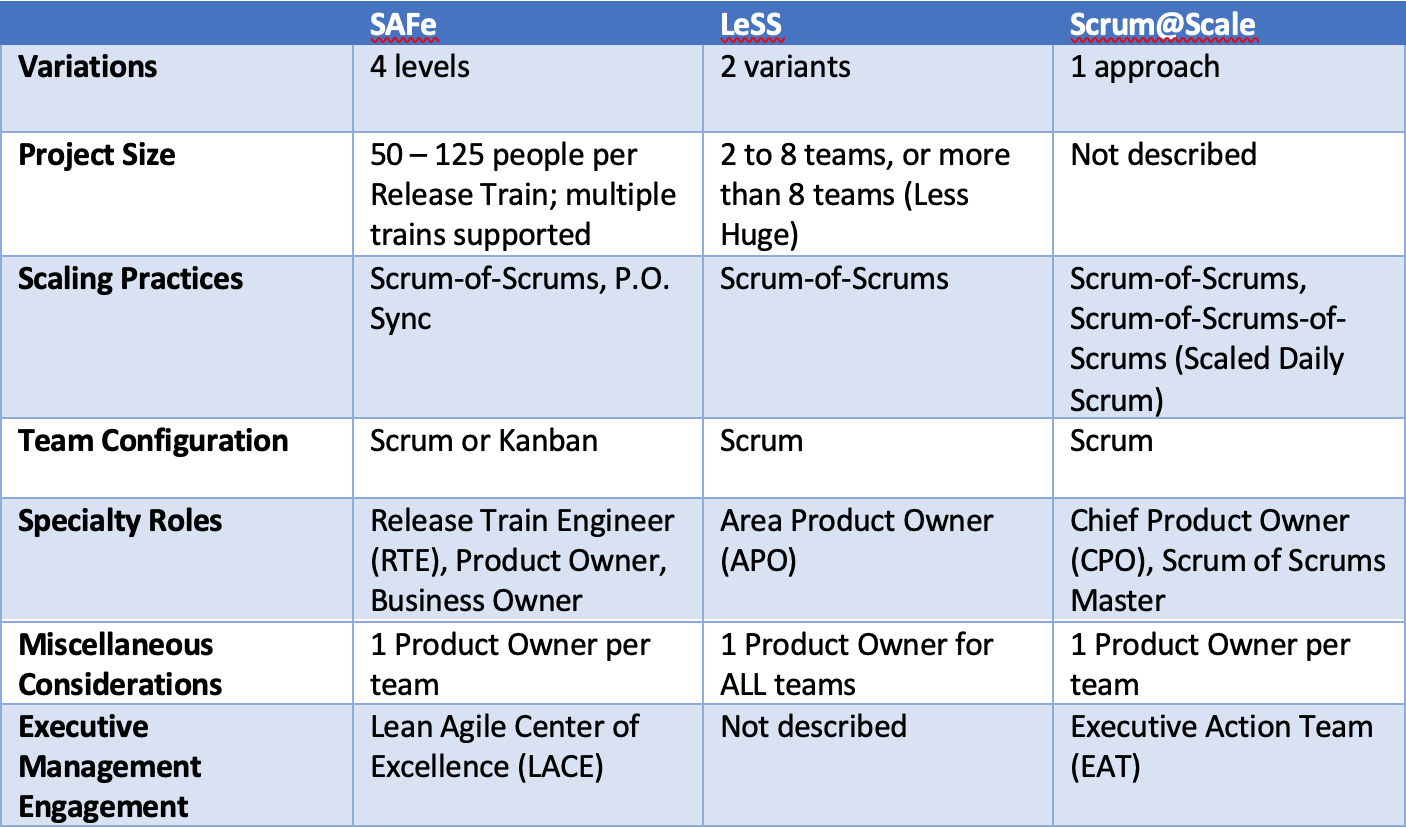Which Agile scaling model is right for me? 3 questions to help you decide today!
Once you have mastered Scrum and Kanban, the logical next step is usually scaling. What is scaling Agile? The simplest way to describe scaling Agile is to implement Agile practices across multiple teams that are working together towards a larger solution that a single team alone cannot deliver.
I’m sure by now you have heard of several popular scaling models and frameworks, including Scaled Agile Framework (SAFe), Large Scale Scrum (LeSS) and Scrum at Scale. There are several others but we will focus on just these three for now.
How do you know which model is right for your team?
Let’s take a look at some of the main differences between the scaling models so that you can make an educated decision on how to scale your Agile practice. Below is a quick summary of the three frameworks mentioned previously.
As you may have realized, there are many similarities between the three frameworks. This is likely because they are all built on the same foundation – Scrum. Each variant takes a different spin on how to manage work across multiple Scrum teams.
Here are a few simple questions to answer as you work towards finding the best scaling model for your team.
Question 1 – How many people do you need to manage?
SAFe recommends that you have at least 50 people but no more than 125 people on a single Agile Release Train, while LeSS suggests a smaller size of 2 to 8 teams (which is up to 72 people if you assume 8 teams and follow Scrum Guide’s recommendation of max team size of 9). Note that LeSS can also work for even larger teams (called Less Huge) which has no upper limit. Scrum at Scale does not provide a team size limit since it is supposedly designed to scaled “indefinitely”. In short, if you have less than 50 people, it makes sense to focus on LeSS or Scrum at Scale more closely than SAFe.
Question 2 – Will you have Kanban teams and Scrum teams working together?
This should be simpler to determine, unless you don’t yet understand what types of teams you need. If you anticipate the need for both types of teams, SAFe would make more sense. However, my opinion is that you could fit Kanban teams into LeSS or Scrum at Scale if you have proper guidance from a coach.
Question 3 – How much structure are you accustomed to following?
SAFe is arguably the most prescriptive of the three frameworks discussed here, which can be a positive or negative depending on the domain in which you operate. Some organizations thrive on structure and rigor, while others prefer a more organic approach. Culture is a big factor that should be considered here; if your organization is used to a lot of formal policies and procedures, it may be more willing to adopt SAFe. This doesn’t mean that the other scaling models will not work, but it is possible that SAFe will be easier for the organization to accept due to the roles and processes being more defined.
In closing, selecting a scaling model is not a simple task. There are lots of factors to consider and a lot at stake, which means it is usually best to consult an experienced Agile Coach who can leverage the past lessons learned from other programs.




